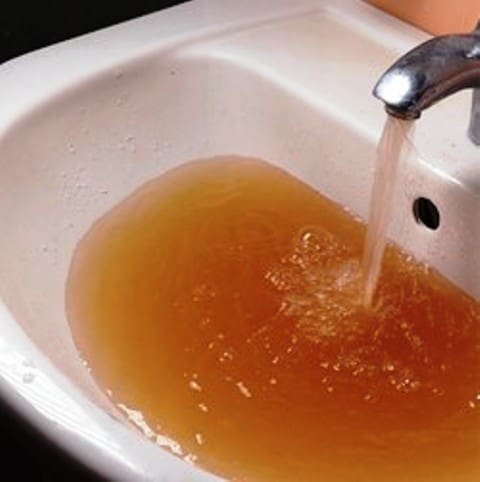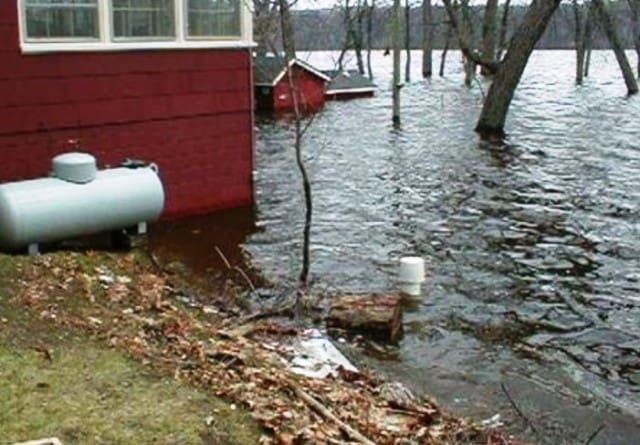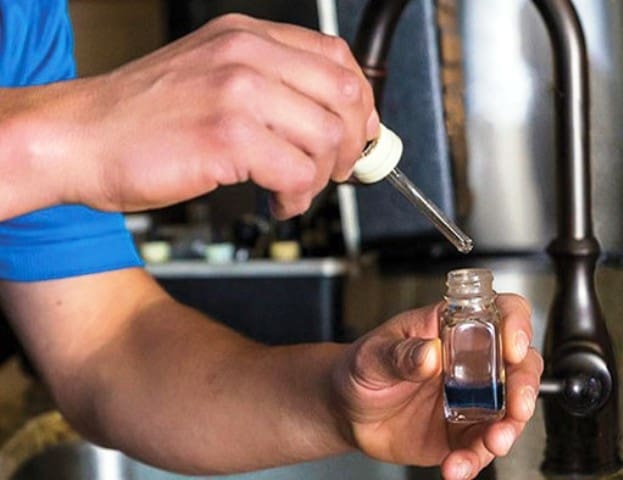
Owning a property that draws groundwater from a private well can feel like a lot of pressure (no joke intended). Many people have questions about how to maintain acceptable water quality while avoiding health and safety concerns.
The monitoring situation of well owners is very different from that of municipal water users. Local governments have enough staff to regularly collect and analyze samples to ensure water quality is safe for the public. No one does this for private wells unless the property owner does it themselves
How Is A Well Maintained and Tested?
Well maintenance and inspection include a number of steps and best practices to ensure the well remains safe and provides clean water. Here are instructions on how to do this:
Maintenance:
- Periodic check:
- Visual inspection:
Regularly inspect the wellhead, casing, and all visible piping for signs of damage or wear.
- Check water quality:
Test well water periodically for contaminants, especially if there are changes in taste, color, or odor.
- Vegetation management:
Make sure there are no overgrown trees around the well. Roots can damage well casings and create pathways for contaminants.
- Seal and disinfect the well:
- Seal:
Make sure the well is properly sealed to prevent surface water from entering. If the seal is broken, repair it promptly.
- Sterilize:
Disinfect well systems and water pipes regularly to kill harmful bacteria. This is especially important after maintenance or in cases of known contamination.
- Check the pump:
Regularly check pumps, pressure vessels and other mechanical components. Look for any signs of leaks, unusual noises or reduced water pressure.
- Check water level:
Monitor the water level in the well to ensure it does not decrease significantly. If so, there may be a problem with the charging speed and a professional inspection is needed.
- Protective cover:
Install a suitable protective layer over the well casing to prevent physical damage and contamination.
Testing:
- Check water quality periodically:
Perform regular water testing for contaminants such as bacteria, nitrates, volatile organic compounds, heavy metals and other pollutants. Testing frequency depends on local regulations and historical water quality.
- Check after maintenance or flooding:
Always test the water after maintenance or if the well area is flooded. Flooding can introduce contaminants into the well.
- Emergency situations:
Check the water immediately if there is a change in color, taste or odor. If someone in your household is sick and has symptoms related to contaminated water, have the water tested immediately.
- Professional examination:
Although home testing kits are available, for complete and accurate results, consider using a professional testing service. Certified laboratories can provide accurate analysis.
- Record keeping:
Record all water tests and the date they were performed. This history can be important for identifying trends or problems over time.
- Compliance with regulations:
Follow local regulations and guidelines regarding well water testing. Different regions have different requirements, so it is essential to comply with the regulations specific to your region.

Best Time of Year to Test Well Water?
Testing well water is essential to ensure its safety and quality. The best time to test your well water is usually spring or early summer. Here’s why:
- After heavy rain:
Spring is a good time because groundwater levels are usually at their highest after the winter snowmelt and rain. This means there is more water in the well and a better sample available for testing.
- Before consuming large amounts of water:
Testing before summer water usage peaks ensures that you are testing water under normal conditions, rather than when demand is high and the water table can be unusually low.
- Seasonal changes:
Seasonal differences can affect the quality of well water. For example, agricultural runoff can affect the quality of well water in agricultural areas during planting and harvesting seasons. Testing at different times of the year provides a comprehensive understanding of water quality throughout the year.
- Incubation period:
If you’ve recently made any changes to your well or its surroundings (such as installing a septic system), it’s a good idea to test your water after some time. This ensures that any changes take effect and provides a more accurate picture of expected water quality over the long term.
- Regular tests:
It is recommended to test well water regularly, at least once a year. However, if you notice a change in the taste, odor, or appearance of your well water, regardless of the season, it’s a good idea to have it tested right away.

Is Well Contamination More Likely During a Certain Season?
The likelihood of a well becoming contaminated can be influenced by several factors, and the particular time of the year can play a role, but it is not the only determining factor. Well contamination can occur at any time of the year, and risk factors vary depending on geographic location, local climate, human activities, and the specific design and location of the well. However, there are some seasonal patterns and considerations you can take into account:
- Heavy rain or flooding:
Wells can be susceptible to contamination during heavy rains or flooding. Floods carry pollutants and contaminants from a variety of sources into groundwater and can affect wells.
- Drought:
Paradoxically, both ends of the water spectrum can be problematic. During periods of drought, groundwater levels can drop and the concentration of pollutants in the remaining groundwater can increase.
- Snowmelt water:
In areas with heavy snowfall, groundwater levels may rise due to spring snowmelt. Not only does this dilute the contaminants, but it can also move the contaminants to the water table.
- Agricultural activities:
Fertilizers and pesticides are often used in agriculture. Use of these chemicals is often seasonal and may coincide with periods of increased risk of contamination.
- Human activities:
Increased outdoor activity during certain times of the year can result in increased trash, improper waste disposal, or other activities that can contaminate wells.
- Well maintenance:
Seasonal changes can affect fountain maintenance and condition. For example, subzero temperatures in winter can damage well casings and lead to contamination.

Should You Test Well Water More than Once a Year?
How often you test your well water depends on several factors, including local regulations, well characteristics, and environmental changes. In general, it’s a good idea to test your well water for bacteria, nitrates, and other contaminants at least once a year. Regular testing ensures that the water is safe to drink and can be used for other household purposes. However,there are certain situations where more frequent testing is recommended:
- Changes in taste, odor, or appearance:
If you notice a change in the taste, smell, or appearance of your well water, you should have it tested right away. These changes may indicate contamination.
- Pregnant or newborn:
If you’re pregnant, planning a pregnancy, or have a newborn, it’s a good idea to test your well water more often, as certain contaminants can pose a greater risk to pregnant women and infants.
- Regional environmental changes:
If construction, mining, drilling, or other environmental changes occur near your well, we recommend testing your water more frequently. These activities can introduce contaminants into your well.
- Natural disasters:
It is important to test your well water after a natural disaster such as a flood or earthquake. Contaminants from disasters can seep into groundwater and affect the quality of well water.
- Presence of certain impurities:
If certain contaminants (such as arsenic or radon) are present in your area, you should test for these contaminants more frequently as recommended by your local health department.
- Malfunction or Repair:
If your well system is malfunctioning or undergoing repair, it is important to test the water after the problem is resolved to ensure that no contamination occurred during the process.
- Private water supply:
If a well is your primary water source (which is common in rural areas), you should consider more frequent testing, such as every six months, to ensure continued safety.

What Can You Do if Water Testing Reveals Problems?
If your well water test reveals problems, it is important to take appropriate steps to ensure the safety and quality of the water you and your family use. Here are steps you can take if your well water test results indicate a problem:
- Identify the problem.
Understand the specific contaminants found in well water. Common problems include bacteria (such as E. coli), high levels of minerals (such as iron or manganese), chemicals (such as pesticides or fertilizers), or other contaminants.
- Consult a professional.
- Water quality experts:
Consult a water quality professional or local health department to interpret the results. They can explain the potential health risks associated with the contaminants found.
- Water Treatment Expert:
If the problem is with your well system, have a water treatment expert or well contractor inspect and repair your well system.
- Manage immediate health risks.
Do not drink water if harmful bacteria (such as E. coli) are present. Boiling water will kill some bacteria, but you may need a more comprehensive water treatment system.
- Install a water treatment system.
- Filter system:
Depending on the contaminants found, you may need a filtration system such as: B. Activated carbon filter or reverse osmosis system. To remove impurities.
- Water softener:
If mineral levels are high, you can install a water softener to reduce hardness.
- UV disinfection:
UV systems can kill bacteria and other microorganisms.
- Chemical treatment:
Chemicals such as chlorine are sometimes used to disinfect well water.
- Consult a professional.
Consult with a water treatment professional to determine the best system for your specific water problem.
- Regular monitoring:
Test your water regularly to ensure your treatment system is effectively removing contaminants. Follow the testing frequency recommended by your local health department or water professional.
- Educate yourself:
Learn how wells work, possible sources of contamination, and maintenance procedures to avoid future problems.
- Legal and insurance considerations:
Check local regulations and consider well water insurance, which can cover the cost of well repairs and water treatment systems.
- Community Resources:
Research local resources and grants available to address well water issues, especially if you are facing financial constraints.
- Alternative water sources:
Consider alternative sources of drinking and cooking water such as bottled water or safe municipally supplied water.
- Retest after modification.
After installing a water treatment system or making changes to your well system, retest the water to ensure that contaminants are effectively removed.
Conclusion:
It is important for well owners to be vigilant year-round and take appropriate measures to protect their wells from contamination. Regular testing, proper well construction, and awareness of local environmental factors are important to ensure the safety of well water.
Consulting with local environmental authorities and experts can provide area-specific guidelines to reduce contamination risks. Please note that solving well water problems often requires professional expertise. Don’t be afraid to seek professional help to make sure your well water is safe and clean.
